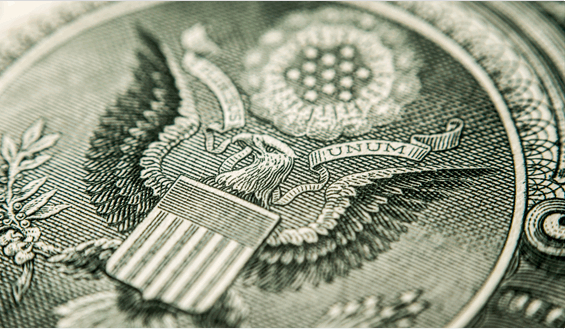Oil Price Rally Continues Apace in September

The oil price rally has continued apace in September, analysts at Standard Chartered noted in a new report sent to Rigzone on Tuesday.
In the report, the analysts outlined that this development has occurred “as physical markets have tightened, following what we estimate was a 3.0 million barrels per day supply deficit in August”.
“The past seven trading days have all seen new year to date highs for front-month Brent, the latest a 10-month high above $95 per barrel,” the analysts said in the report.
“There have been higher intra-day highs for the past eight trading days and for 16 of the past 18 trading days,” they added.
The analysts pointed out in the report that WTI prices have shown a similar pattern, “with higher intra-day highs for 16 of the past 17 trading days and a 10-month high above $92 per barrel”.
“Meanwhile, the OPEC basket of crude oils reached $96.93 per barrel on September 18, more than $26 per barrel above March’s year to date low,” they added.
The Standard Chartered analysts stated in the report that the oil price rise has been associated with a sharp drop in volatility as prices have steadily ground higher.
“Realized annualized 30-day Brent volatility stood at a 26-month low of 16.2 percent at settlement on September 18. Volatility has only been lower on two days since the start of 2020,” the analysts said in the report.
“The latest leg higher in prices has also seen the first significant drawing in of funds from money-managers during the rally,” they added.
“Our crude oil money-manager positioning index rose 11.5 week on week to a 30-month high of +3.6. Meanwhile, total money-manager longs across the main Brent and WTI contracts rose 44.8 million barrels to an 18-month high of 595.5 million barrels and money-manager shorts fell 1.7 million barrels to a five-month low of 115.2 million barrels,” the analysts continued.
Fourth Quarter Fundamentals
In the report, the Standard Charted analysts highlighted that views on Q4 fundamentals remain “far apart even within two weeks of the start of the quarter” and noted that the latest round of monthly balance reports “has only widened the gulf between the main agencies’ forecasts”.
“The most bearish Q4 view is that of the Energy Information Administration (EIA), which forecasts a Q4 call on OPEC and inventories (i.e., the level of OPEC output that would keep global inventories unchanged) of 27.8 million barrels per day,” the analysts said in the report.
“This is within the range of estimates of OPEC output in July. The OPEC Secretariat survey of secondary sources puts OPEC output at 27.45 million barrels per day, the International Energy Agency (IEA) estimates it at 27.96 million barrels per day and the EIA estimate is 27.03 million barrels per day,” they added.
“In broad terms, the EIA forecast implies a roughly balanced market with a significant possibility of a surplus should OPEC output move higher or should demand disappoint,” they went on to state.
The analysts noted in the report that, “at the other end of the scale”, the OPEC Secretariat forecasts a Q4 call on OPEC of 30.7 million barrels per day.
“The additional 2.9 million barrels per day above the EIA estimate roughly evenly split between a higher demand forecast and a lower non-OPEC supply forecast,” the analysts said in the report.
“In stark contrast to the EIA forecast, the OPEC Secretariat forecast implies a very high probability of a large global stock draw. The IEA forecast is between the two extremes at 29.0 million barrels per day, following a 0.9 million barrel per day downwards revision in the latest report,” they added.
The analysts outlined in the report that the IEA estimate is close to Standard Chartered’s own forecast of 28.8 million barrels per day.
“We expect global inventories to draw by 1.3 million barrels per day in Q4, a deceleration from our estimate of a 2.1 million barrel per day draw in Q3,” they said in the report.
“We expect draws to continue through H1-2024, with the call on OPEC increasing 0.8 million barrels per day quarter on quarter to 29.6 million barrels per day in Q1 and increasing a further 0.5 million barrels per day quarter on quarter to 30.1 million barrels per day in Q2,” they added.
Oil Price
In a separate report sent to Rigzone last week, analysts at Standard Chartered said oil prices had been driven higher in Q3 by sharp falls in inventories caused by excess demand.
“We expect that dynamic to continue in Q4,” the analysts said in that report.
“According to our supply and demand model, global inventories rose by 203 million barrels in H2-2022. In sharp contrast, we forecast that global inventories will fall by 313 million barrels in H2-2023,” they added.
“We expect draws to average 1.4 million barrels per day in Q4. While this is lower than Q3’s 2.0 million barrel per day average draw and August’s peak 3.1 million barrel per day draw, it represents a significant additional tightening from a base of already low inventories,” the analysts went on to state.
In that report, the Standard Chartered analysts highlighted that their forecast for the ICE Brent Q4 average is $93 per barrel.
“That forecast has been unchanged for the past 15 months despite Brent trading across a $50 per barrel range during that time,” the analysts said in the report.
“Given prompt prices are now within range of the forecast and we think fundamentals will remain highly supportive, we see no reason to change. We do, however, caution that our forecast is a period average rather than a point forecast and hence does not rule out an intra-Q4 high above $100 per barrel,” they added.
“We think the main fundamental uncertainty is potential upside risk to our Q4 demand estimates, adding a further potential layer of price support,” they continued.
That Standard Chartered report also projected that NYMEX WTI crude oil would average $91 per barrel in the fourth quarter.
Standard Chartered’s Q4 ICE Brent and NYMEX WTI forecasts were unchanged in its latest report.
Looking out to Q1 next year, Standard Chartered projected in its latest report that ICE Brent would average $92 per barrel and NYMEX WTI would average $89 per barrel.
EIA Price Projections
In its latest short term energy outlook (STEO), the EIA projected that Brent spot prices will average $92.68 per barrel in the fourth quarter and $91 per barrel in the first quarter of 2024.
The WTI spot price will average $87.68 per barrel in the fourth quarter and $86 per barrel in the first quarter of next year, according to the September STEO.
In its previous STEO, which was released in August, the EIA forecast that the Brent spot price would average $87.65 per barrel in the fourth quarter and $88 per barrel in the first quarter of next year.
The WTI spot price was anticipated to come in at $82.65 per barrel in the fourth quarter of 2023 and $83 per barrel in the first quarter of next year, in the EIA’s August STEO.
“We expect the Brent crude oil price to average $93 per barrel during 4Q23, up from $86 per barrel in August,” the EIA noted in its September STEO.
“A decline in global oil inventories in the coming months supports the Brent price in our forecast. The price eases to an average of $87 per barrel by the second half of 2024 because we expect global oil inventories to rise during that period,” the EIA added in the STEO.


